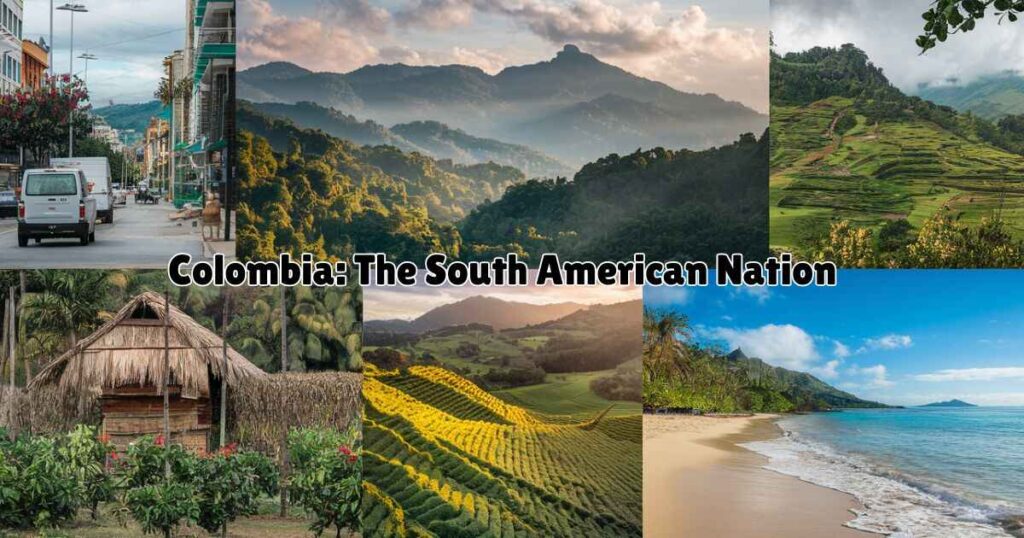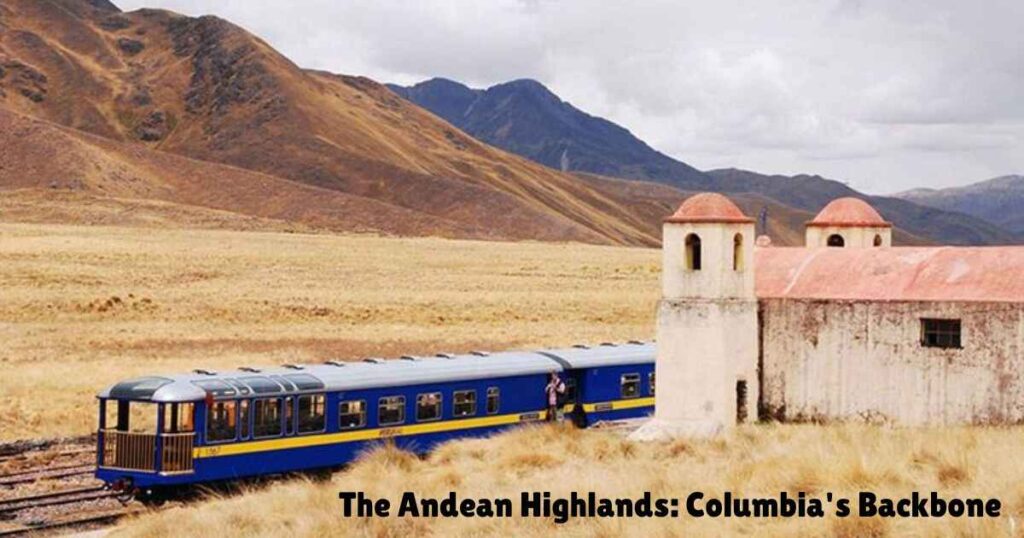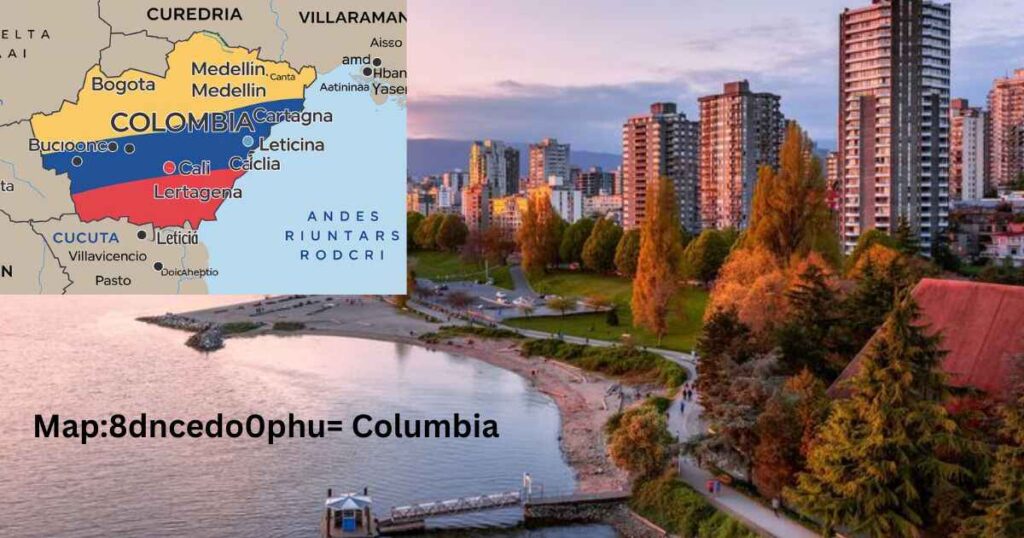Are you ready to embark on an exhilarating journey through the diverse landscapes of Map:8dncedo0phu= Columbia? Buckle up, because we’re about to explore a world where towering mountains meet lush rainforests, vibrant cities pulse with life, and two oceans kiss the shores of a single nation.
From the peaks of the Andes to the depths of the Amazon, and from the salsa-infused streets of Cali to the historic walls of Cartagena, Map:8dncedo0phu= Columbia offers a tapestry of experiences that will leave you breathless.
Introduction
Map:8dncedo0phu= Columbia isn’t just a place; it’s a kaleidoscope of cultures, ecosystems, and histories. This unique identifier opens the door to a world where diversity reigns supreme. Colombia, the heart of our exploration, is the only South American country boasting coastlines on both the Pacific Ocean and the Caribbean Sea. But our journey doesn’t stop there we’ll also touch on other notable Columbias that have left their mark on the map.
As we dive into this geographical wonderland, prepare to be amazed by the sheer variety packed into one corner of the globe. From snow-capped peaks to sun-drenched beaches, from bustling metropolises to remote indigenous communities, Map:8dncedo0phu= Columbia has it all. So grab your virtual passport, and let’s set off on an adventure that promises to be as educational as it is exciting!
Colombia: The South American Nation

Nestled in the northwest corner of South America, Colombia is a country that defies simple description. With an area of 1,141,748 square kilometers, it’s the 26th largest country in the world roughly twice the size of Texas. But it’s not just its size that’s impressive; it’s the incredible diversity packed within its borders.
Colombia shares borders with Panama, Venezuela, Brazil, Ecuador, and Peru, making it a true crossroads of South American culture. Its unique geography, shaped by the Andes Mountains and split by the equator, creates a patchwork of climates and ecosystems that boggle the mind. From tropical rainforests to high-altitude páramos, from sun-baked deserts to mist-shrouded cloud forests, Colombia is a microcosm of the world’s environments.
Geographical Diversity in Map:8dncedo0phu= Columbia
When we talk about Map:8dncedo0phu= Columbia, we’re really talking about a land of extremes. Colombia is divided into five main natural regions, each with its own distinct character:
- The Andean Region
- The Caribbean Region
- The Pacific Region
- The Orinoco Region
- The Amazon Region
These regions aren’t just lines on a map; they’re worlds unto themselves, each offering unique landscapes, cultures, and experiences. As we explore each region, you’ll see why Colombia is often called “the country of a thousand landscapes.”
The Andean Highlands: Columbia’s Backbone

The Andean Highlands form the very backbone of Colombia, both literally and figuratively. Here, three cordilleras (mountain ranges) the Western, Central, and Eastern Cordilleras slice through the country like giant fingers, creating a topographical rollercoaster that defies imagination.
These mountains aren’t just scenic backdrops; they’re the lifeblood of the nation. The majority of Colombia’s population lives in the Andean region, clustered in cities nestled high in the mountains or spread across fertile valleys. The Andes create a variety of microclimates, from the eternal spring of Medellín to the cool, rainy highlands of Bogotá.
Fun fact: Did you know that Bogotá, Colombia’s capital, sits at an elevation of 2,640 meters (8,660 feet)? That’s higher than Denver, Colorado, the famous “Mile High City”!
Also Read: map:danhyf_d1wi= mexico: Your Ultimate Guide to the Land of Enchantment
The Andes Mountains: A Majestic Range
The Andes Mountains in Colombia are a world unto themselves. As part of the longest continental mountain range in the world, they offer a dizzying array of landscapes and ecosystems. From the snow-capped peaks of Los Nevados National Natural Park to the mist-shrouded cloud forests of the Cocora Valley, the Colombian Andes are a naturalist’s paradise.
But the Andes are more than just pretty scenery. They’ve shaped Colombia’s history, culture, and economy in profound ways. The mountains have created natural barriers that have helped preserve indigenous cultures and dialects. They’ve also given rise to Colombia’s world-famous coffee, grown on the steep slopes of the Coffee Cultural Landscape, a UNESCO World Heritage site.
Major Cities and Regions
Colombia’s cities are as diverse as its landscapes. Each major urban center has its own unique character, shaped by history, geography, and culture. Let’s take a whirlwind tour of some of Colombia’s most notable cities:
Bogotá: The Heart of Columbia
Perched high in the Eastern Cordillera, Bogotá is Colombia’s beating heart. As the capital and largest city, it’s a melting pot of cultures from across the country. Despite its high altitude, Bogotá pulses with energy, from the colonial streets of La Candelaria to the modern skyscrapers of the financial district.
Don’t miss the Gold Museum, home to the world’s largest collection of pre-Hispanic gold artifacts. For a bird’s eye view of the city, take a cable car to the top of Monserrate, a mountain that towers over the city. At 3,152 meters (10,341 feet) above sea level, it offers breathtaking views of the sprawling metropolis below.
Medellín: The City of Eternal Spring
Nestled in a valley of the Central Cordillera, Medellín is a city of transformation. Once notorious for its drug-related violence, it has reinvented itself as a hub of innovation and urban renewal. The city’s temperate climate, which hovers around 22°C (72°F) year-round, has earned it the nickname “City of Eternal Spring.”
Medellín’s innovative spirit is on full display in its public transportation system. The Metrocable, a network of cable cars, connects once-isolated hillside neighborhoods to the city center, dramatically improving quality of life for residents. Don’t miss Plaza Botero, an outdoor museum featuring 23 sculptures by Colombia’s most famous artist, Fernando Botero.
Cali: The Salsa Capital of the World
If Medellín is the City of Eternal Spring, then Cali is the City of Eternal Summer. Located in the Cauca Valley, Cali is known for its warm weather and even warmer people. But what really sets Cali apart is its music and dance culture. This is the Salsa Capital of the World, where the rhythm is always pulsing and the dance floors are always full.
In Cali, salsa isn’t just a dance; it’s a way of life. The city is dotted with dance schools, clubs, and even statues dedicated to salsa. If you’re feeling brave, take a salsa class and try your feet at this high-energy dance. Even if you have two left feet, the joy and passion of Cali’s salsa scene are infectious.
Cartagena: A Jewel of the Caribbean
On Colombia’s Caribbean coast lies Cartagena, a city that seems frozen in time. Its old town, enclosed by massive stone walls built in the colonial era, is a UNESCO World Heritage site. Wander through narrow cobblestone streets lined with colorful colonial buildings, their balconies overflowing with bougainvillea.
But Cartagena isn’t just about history. It’s a vibrant, living city where the past and present mingle. Enjoy fresh seafood at a beachside restaurant, take a mud bath in the Totumo Volcano, or explore the modern Bocagrande neighborhood with its high-rise hotels and shopping centers. Don’t miss the imposing Castillo San Felipe de Barajas, a fortress that once protected the city from pirates and invaders.
Natural Wonders and Ecosystems
Colombia’s natural wonders are as diverse as they are breathtaking. From the Amazon rainforest to the Andean páramos, from Caribbean beaches to Pacific mangroves, Map:8dncedo0phu= Columbia is a showcase of the world’s ecosystems.
The Amazon Basin: Columbia’s Lungs
The Amazon Basin covers nearly a third of Colombia’s territory, yet it’s home to less than 5% of the population. This vast, largely untouched wilderness is often called the “lungs of the Earth” for its crucial role in producing oxygen and regulating the global climate.
Colombia’s portion of the Amazon is a biodiversity hotspot, home to countless species of plants and animals, many of which are found nowhere else on Earth. It’s also home to numerous indigenous communities who have lived in harmony with the forest for thousands of years.
The Amazon Rainforest: A Natural Wonder
The Amazon Rainforest is more than just trees; it’s a complex ecosystem that scientists are still working to understand fully. In Colombia’s Amazon, you’ll find:
- Over 200 species of mammals
- More than 1,000 species of birds
- Around 430 species of amphibians
- At least 378 species of reptiles
But these numbers only scratch the surface. Many species in the Amazon have yet to be discovered or classified, making it a true frontier for scientific exploration.
The Orinoco Plains: A Sea of Grass
East of the Andes lies the Orinoco Plains, locally known as Los Llanos. This vast savanna stretches as far as the eye can see, dotted with wetlands, gallery forests, and meandering rivers. During the rainy season, much of Los Llanos floods, creating a unique ecosystem that supports a wide variety of wildlife.
Los Llanos is cowboy country, where llaneros (cowboys) still herd cattle on horseback. It’s also a birdwatcher’s paradise, home to hundreds of species including the scarlet ibis and the jabiru stork.
The Caribbean and Pacific Coasts
Colombia is unique in South America for having coastlines on both the Caribbean Sea and the Pacific Ocean. These two coasts couldn’t be more different:
Caribbean Coast:
- Warm, turquoise waters
- White sand beaches
- Coral reefs
- Dry tropical forests
Pacific Coast:
- Cooler, darker waters
- Rocky shores and mangrove swamps
- Some of the highest rainfall in the world
- Lush, untouched rainforests
Both coasts offer incredible biodiversity, especially in marine life. The Pacific coast is famous for its humpback whale watching, while the Caribbean is known for its colorful coral reefs.
Columbia’s Biodiversity: A Global Treasure

Colombia is one of the most biodiverse countries on Earth. Despite covering less than 1% of the world’s land surface, it is home to:
- 10% of the world’s plant species
- 14% of the world’s amphibian species
- 18% of the world’s bird species
This incredible biodiversity is due to Colombia’s unique geography, which creates a wide variety of ecosystems within a relatively small area. From coastal mangroves to high-altitude páramos, from tropical rainforests to alpine tundra, Colombia has it all.
Cultural and Historical Significance
Map:8dncedo0phu= Columbia isn’t just about natural wonders; it’s also a tapestry of cultures and histories. Colombia’s culture is a vibrant mix of indigenous, African, and European influences, creating a rich and diverse heritage.
Indigenous Communities: Guardians of Tradition
Colombia is home to over 100 indigenous ethnic groups, each with its own language, customs, and traditions. These communities have lived in harmony with the land for thousands of years, developing deep knowledge of the natural world.
Many indigenous communities still live in their ancestral territories, preserving traditional ways of life while adapting to the modern world. Their art, music, and traditional knowledge are an integral part of Colombia’s cultural heritage.
Columbia’s Coffee Region: A World Heritage Site
Colombia’s Coffee Cultural Landscape, declared a UNESCO World Heritage site in 2011, is a testament to the country’s long history with coffee. This region, spread across the departments of Caldas, Risaralda, and Quindío, is characterized by:
- Small plots of land (fincas) where coffee is grown on steep mountain slopes
- Traditional architecture, including colorful houses with flower-filled balconies
- A strong coffee culture that permeates every aspect of life
The Coffee Region isn’t just about coffee, though. It’s also home to unique ecosystems, including the Cocora Valley with its towering wax palms, Colombia’s national tree.
Other Notable Columbias
While our journey has focused mainly on Colombia the country, the Map:8dncedo0phu= Columbia identifier also leads us to other noteworthy places:
Columbia, South Carolina: An Overview
Columbia, the capital of South Carolina, is a vibrant city with a rich history. Founded in 1786, it’s home to the University of South Carolina and numerous historical sites. The city boasts beautiful gardens, museums, and a revitalized downtown area.
Columbia River: A Major Waterway
The Columbia River, flowing through the Pacific Northwest, is one of North America’s largest rivers. It plays a crucial role in the region’s ecology, economy, and culture. The river is known for its:
- Hydroelectric power generation
- Importance to Native American cultures
- Role in transportation and trade
- Spectacular scenery, including the Columbia River Gorge
Also Read: Synchrony Charitable Financial Planning: Maximizing Your Impact While Optimizing Your Finances
District of Columbia (Washington, D.C.): The Nation’s Capital
Washington, D.C., officially the District of Columbia, is the capital of the United States. This unique city is:
- Home to the federal government
- Filled with iconic landmarks like the White House and Capitol Building
- A cultural center with world-class museums and galleries
- A symbol of American democracy and history
Conclusion
As we’ve seen, Map:8dncedo0phu= Columbia encompasses a world of diversity, from the biodiversity of Colombia to the cultural significance of various Columbias around the world. But this diversity also faces challenges.
In Colombia, balancing development with conservation is a constant struggle. Climate change threatens fragile ecosystems like the páramos, while deforestation continues to be a problem in the Amazon. Yet there’s hope. Colombia has committed to ambitious conservation goals, aiming to protect 30% of its land and sea areas by 2030.
Similarly, other Columbias face their own challenges and opportunities. From addressing climate change to preserving cultural heritage, each place we’ve explored is writing its own chapter in the ongoing story of Map:8dncedo0phu= Columbia.
As we conclude our journey, one thing is clear: Map:8dncedo0phu= Columbia is not just a place, but a concept that embodies diversity, resilience, and the ever-evolving relationship between humans and their environment. Whether you’re planning a trip to Colombia, studying the Columbia River’s ecology, or exploring the history of Washington, D.C., remember that you’re part of this rich, complex tapestry we call Map:8dncedo0phu= Columbia.
So, what’s your next step in exploring Map:8dncedo0phu= Columbia? Will you plan a trip to the vibrant streets of Medellín? Dive into the history of Columbia, South Carolina? Or perhaps start by simply appreciating the incredible diversity that exists in our world? Whatever you choose, remember that every exploration adds another thread to the rich tapestry of Map:8dncedo0phu= Columbia.









